
Date: 14 February 2024
In 2023 industry emissions fell by 12% against the previous year – as found by the current study “Agora Energiewende”⁽¹⁾. A positive development at first sight, which is, however, largely due to declining production in the energy-intensive sectors driven by lower demand in a competitive environment made difficult by high energy prices. To the flat glass industry, the first Hot Topic at this year’s glasstec (22 – 25 October, Düsseldorf) – Circular Economy – is one of the most important topics of the decade, both ecologically and economically: cullet returned into the cycle saves raw materials, lowers furnace temperature and saves valuable energy. At the same time, one kilogramme of float glass made of recycled glass emits some 0.3 kg less CO2 than a glass batch consisting only of primary raw materials. The problem: there is too little cullet from demolished or dismantled old buildings and modernisation and the recycled material streams are not flowing back to the flat glass industry to the desired degree. This article analyses the different reasons for this and points to possible solutions.
⁽¹⁾ For these and more figures see “Recycling of Flat Glass in Construction – Analysis of As-is Situation and Derivation of Recommendations for Action” ift Rosenheim 11/2019 and the climate and sustainability working party “Klima und Nachhaltigkeit”, Federal Flat Glass Association, 1 March 2022
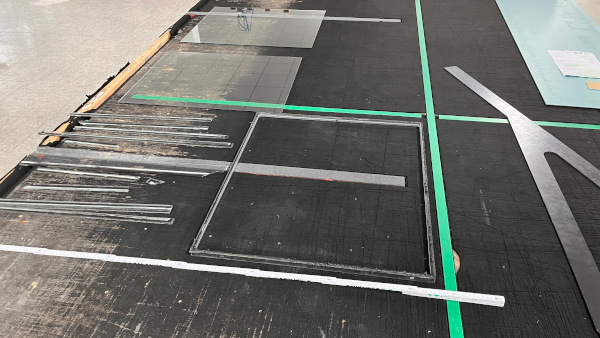
One conclusion from the get-go: those wanting functioning cycles will have to fight embedded structural problems at many points involved in the process and have their work cut out convincing people. Even now, very little closed-loop material recycling is achieved when demolishing or modernising buildings. Which means glass from architecture is still all too rarely converted back into architectural glass again. Those involved in the recycling process include float glass producers and processors, window installers, the large-scale recyclers – and everyone who has ever used a reuse and recycling centre to return construction materials.
A possible ideal scenario: A building with a digital Building Resource Passport (DGNB) reaches the end of its lifecycle, is carefully dismantled (not demolished), its materials are reclaimed and re-used. Where this is not possible, the raw materials are properly separated, transported to a recycling company that reworks them; the high-quality flat glass cullet is then returned to the producers’ float glass melting units. Reality looks different though: When a building reaches its “end of life”, usable materials still often end up as building rubble with recycling companies. Things look better when buildings are dismantled rather than demolished – here, the construction process is practically reversed in order to retain valuable raw materials or parts of the basic structure of the building. The materials obtained are separated and reclaimed at great expense.
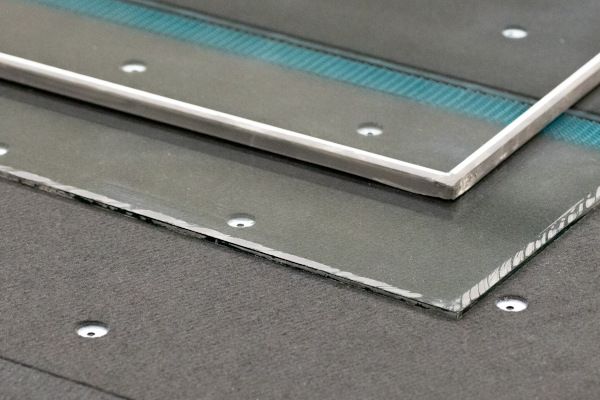
But there are also risks to the purity of materials lingering at the recycling centre itself. There are clear guidelines for both commercial operators and end users on where to dump which material but at times the old ceramic hob still ends up in the construction glass container or the window complete with frame and profiles is dumped in the wrong bin because it just happens to be closer to the van. The result are contaminated materials and even after reprocessing, the quality may not be sufficient to meet the very high demands of the flat glass industry.
The background to this: even tiny contaminations in the glass batch can seriously disrupt production because the systems react sensitively to smallest material fluctuations; meaning they need to be recalibrated, potentially leading to lengthy and expensive production downtimes. Even if the cullet quality is found to be good after inspection at the recycling centre, there is often a perceived “residual risk” for recyclers who prefer (on account of the lower entrepreneurial risks) to sell this cullet to container glass or insulation material manufacturers who have lower purity requirements and also require it as an important recyclate.
For recycling it would therefore be important to sort/separate the materials more carefully and to take them to recycling centres. Solutions should be found to protect the material pools better from contamination. To this end, there must be more general awareness raised for the value of materials, which become valuable resources and thereby save natural resources – maybe a long-term communication task for all associations involved in construction. The situation could also be improved if interfaces between the glass industry and system providers were created with initiatives like Rewindo (recycling plastics from old windows) and A/U/F (aluminium recycling) in order to secure the highest quality of insulating glass possible from these already well-functioning systems.
What already works well for recyclers is the cooperation with glass processing companies. The cullet produced by sizing in insulating glass production, for example, is separately pooled by recyclers and returned to float glass manufacturers for closing the loop in the glass batch. However, this is not always easy at present, as float glass manufacturers are competing for cullet and rising costs for tolls and transportation to the melting unit sites are causing cullet prices to rise on a market already impacted by high energy prices.
Major float glass manufacturers are already seeking alternative ways to increase their recycling ratios and are trying to already identify demolition, dismantling or refurbishment projects in the tendering phase to then arrange individual collection and reclamation with recycling companies. But this does not eliminate the general problem of volumes.
Quantities issue: architectural glass is long-lasting
Increasing the percentage of cullet quickly and significantly proves difficult due to the far too low overall quantities of glass from end-of-life buildings and components because float glass is an extraordinarily slow-moving commodity. Buildings dating back to the 1970s, 80s and 90s will only end up at recycling centres in the coming years. The buildings of relevance currently are older buildings with a significantly lower percentage of glass in the building skin than is customary today. It will take time before we see more glass for recycling being reclaimed from triple insulating glass or large-format facades – high-quality insulating glass is long-lasting and survives several decades without losing functionality.
This is also backed up by the numbers: according to the latest figures published by “Bundesverband Flachglas e.V.” (German Flat Glass Association), some 521,000 tons of cullet are available annually in Germany.[[1]] Of this, 350,000 tons come from old buildings while the remaining 171,000 tons with markedly higher purity are sent by glass processing companies to recycling firms. On the other hand, every year 1.67 million tons of new float glass are placed on the market for use in building applications. Due to the circumstances outlined above, only 101,000 tons (19%) flow back into float tanks in a closed loop from recyclers. The largest share, some 235,000 tons (45%), leaves the closed-loop systems to end up in container glass while a further 165,000 tons (32%) are channelled into producing insulation materials and other mineral construction materials. Adding all this up you realise that 20,000 tons (4%) of cullet still end up in landfill at the end of the day if they cannot be used for another purpose.
Even if solutions are found to salvage the cullet existing in old buildings to the ideal quality level: over a third of the total volume of glass put on the market every year will – for the time being – not be recoverable from buildings because the proportion of glass in their facades is too low – it is not expected for large formats and triple-insulating units to be returned any time soon. By adding cullet from their own manufacturing sites, float glass producers could realise a recycling ratio of 40 to 50 mathematically speaking – provided the cullet was not required in other industries, too. A higher figure will only become achievable once the first triple glazing units, larger window-pane formats and glass facades, which appeared around the turn of the millennium, are received by recycling centres.
Manufacturers’ own networks and systems would also be worth considering to secure end-of-life insulating glass and cullet. This is a view also shared by Tim Janßen, Executive Managing Director and co-founder of the non-profit “Cradle to Cradle” NGO: “Manufacturers should, in their own interest, work towards orienting not only their product but also their business model towards a cradle-to-cradle approach and design them for circularity. This may mean offering glass as a service for a building for a specific period of use, and after the end of this period, getting the product and the raw materials contained in it back rather than selling their property rights.” Modular facades and glass or windows for buildings could in future be rented. Like this, “Glass as a Service” could make for a planned, energetic updating of buildings at regular intervals thereby ensuring a more constant return of insulating glass for re-use, re-manufacturing and recycling – albeit still at very long-term intervals.

Re-Use, Re-Manufacturing and Recycling
“End-of-life” insulating glass, i.e. insulating glass from old buildings, can be given a “second life” in a variety of ways. The term “re-use” refers to the reutilisation of insulating glass as a component in another location if it still has the necessary mechanical strength and the required Ug value. Failing this, the insulating glass can be “re-manufactured” either by upgrading it (e.g. refilling with argon) or by separating it into individual components, reconditioning it and processing it into a “new” insulating glass with dismantled and recoated individual panes. Should the test show that this is not possible either, for instance because glass and layer corrosion, relevant scratches, defects and edge damage are detected, the glass is returned to the material cycle as cullet.
The German Glass Construction Association (Fachverband Konstruktiver Glasbau e.V.) is currently working on this issue in its “Sustainability Working Group”, primarily to create technical and ideally standardised factual data. At present, there are no basic principles that can serve as guidelines or orientation for planners and contractors to qualify glass from existing buildings for new applications. Tests are also underway to determine whether the applicable technical regulations can be used or whether a tiered system of quality requirements needs to be defined. The working group’s interim report 9/2023 provides a detailed overview of the research concept and the current status; in future, it is intended for this to lead to a set of guidelines entitled “R-Glass Recommendations for Action” (“Handlungsempfehlungen R-Glas”).
Automated separation of “end-of-life” insulating glass units
The re-use and re-manufacturing of insulating glass is already happening in initial projects (of course with approval in individual cases (“Zustimmung im Einzelfall” – ZiE) and project-related construction authorisation (“vorhabenbezogene Bauartgenehmigung” – vBG)) and is an important approach that conserves resources, reduces the CO2 footprint of buildings and saves a little on new glass production. Until now, in addition to complex German building legislation, the main technical problem was that it was not easy to cleanly separate insulating glass units built to last. In any case, this process has so far been a manual one.
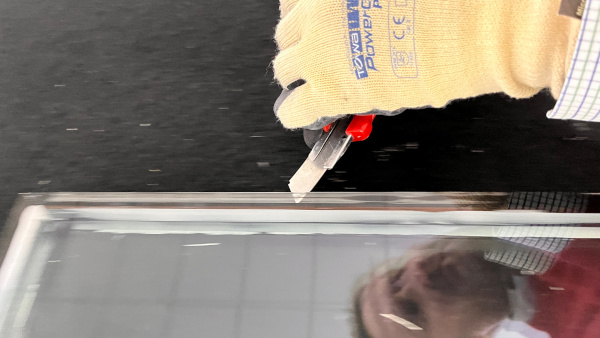
This is where machinery manufacturers like Hegla are now coming up with promising and more economical solutions: With “IG2Pieces system technology”, the company has now developed a solution that can separate glass from insulating glass units cleanly and without damage from the spacer, and where the sealing compound is also said to be removed almost residue-free and fully automatically. The machine also measures the dimensions and insulating glass structure automatically. Once the individual panes have been separated from the laminate, they can be “re-manufactured” or recycled in the float glass manufacturer's “closed loop” without compromising the quality of the raw materials. Re-manufacturing is particularly economical for large, high-quality units that are still in use and reduces CO2 emissions, especially if the units contain complex structures, TSG and laminated sheet glass or high-quality coated glass sheets that are not lost in this way.
Separating high-quality glass plates for reuse is now becoming increasingly attractive commercially thanks to the automated process, especially as the price of CO2 rises. Planned “urban mining” is the key to climate neutrality, as only around half of the total CO2 emissions from new buildings are generated during operation. The other half, the “grey energy”, is generated by the production and transport of building materials, as well as the “end-of-life” – it is these CO2 emissions that could most effectively be reduced through more re-use, re-manufacturing and recycling. More standardisation of building components could perhaps contribute to this most effectively – a topic that has been under discussion for a long time. With more standardisation in suitable building categories, serial production by manufacturers and processors would be simplified, the take-back systems for re-use, re-manufacturing and recycling would be easier to organise and manufacturer solutions for separating insulating glass would be immediately cost-effective.
The “Circular Economy” is one of the hot topics at this year’s glasstec, the leading international trade fair for the glass industry, and one that will also be discussed at the trade fair’s Architecture Forum in October 2024. It will be interesting to see what impetus the trade fair will provide for the future of closed-loop recycling.
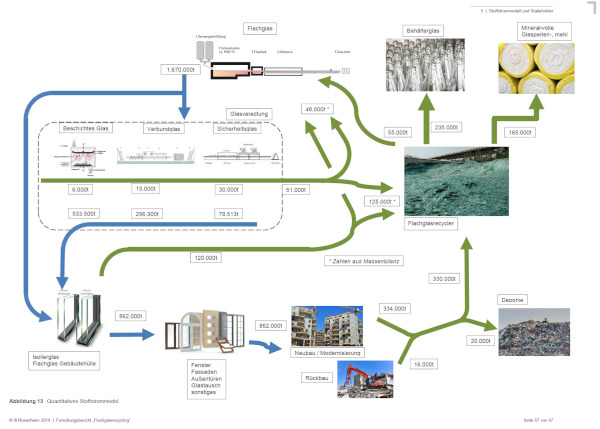
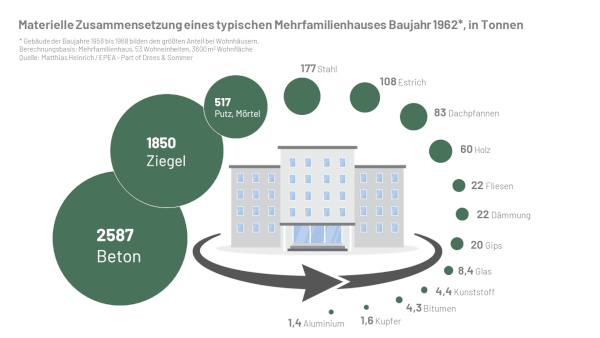
About the author
Marc Everling studied media sciences at the Technical University of Braunschweig, worked for 14 years as a consultant in PR and marketing agencies and for six years as head of marketing at one of the global players in the flat glass industry. In February 2021, he founded a network agency that specialises in communications consulting and press relations for building material-producing companies, initiatives, associations, trade fairs and architects who work and produce sustainably in line with the ecological transformation of the industry.

 600450
600450

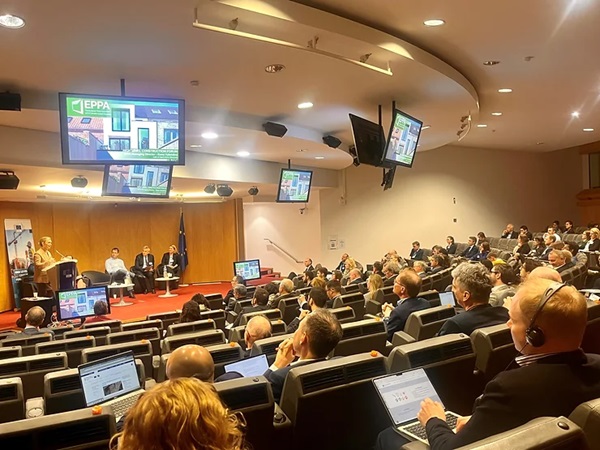
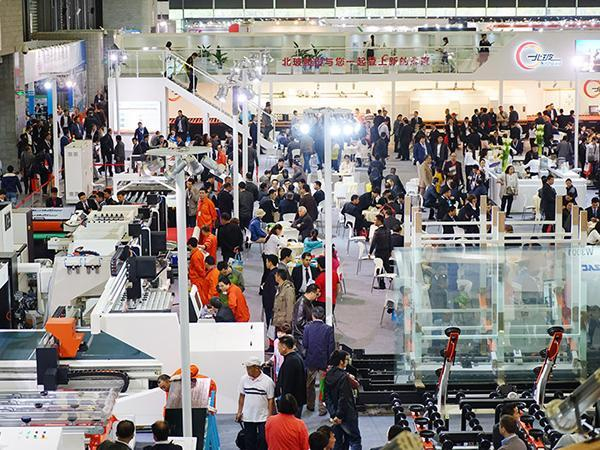

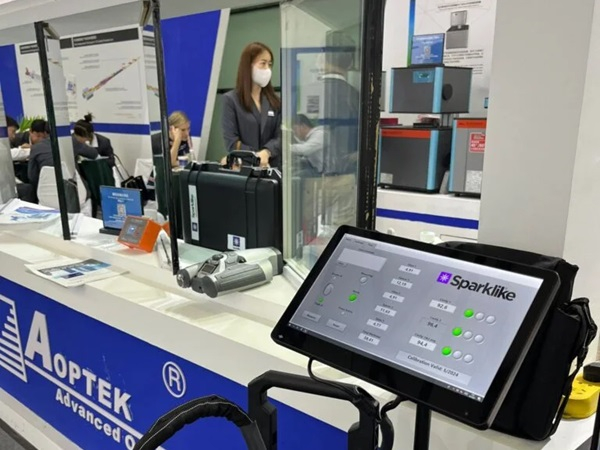


Add new comment